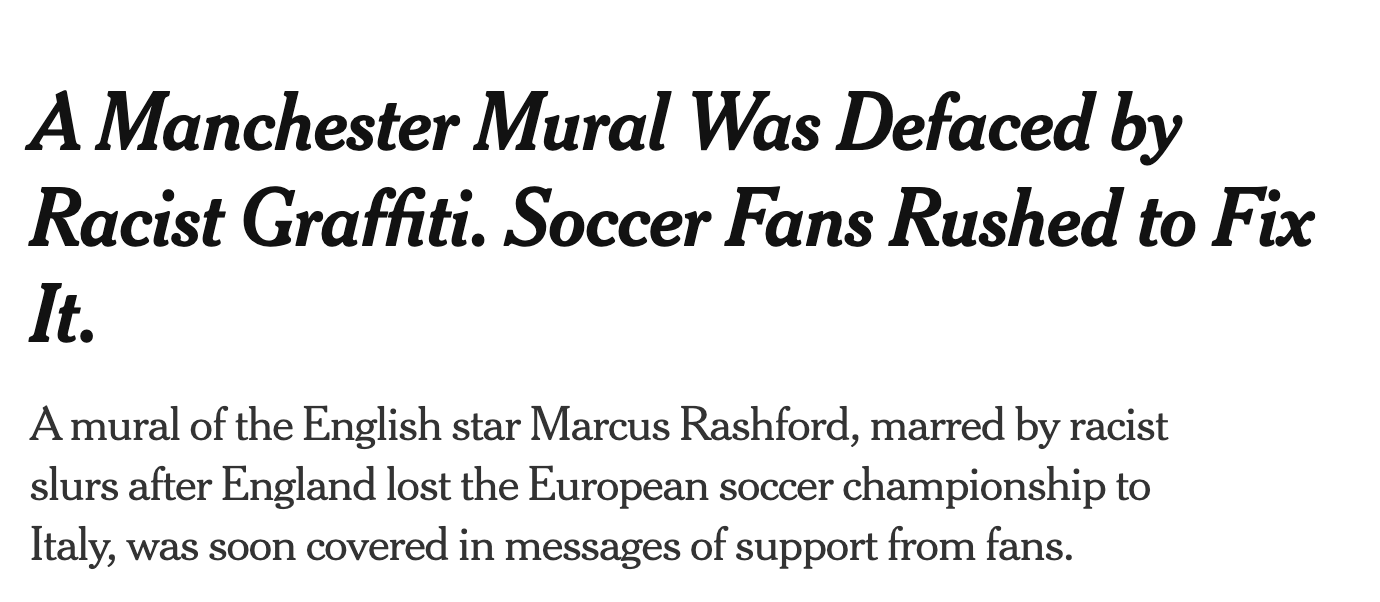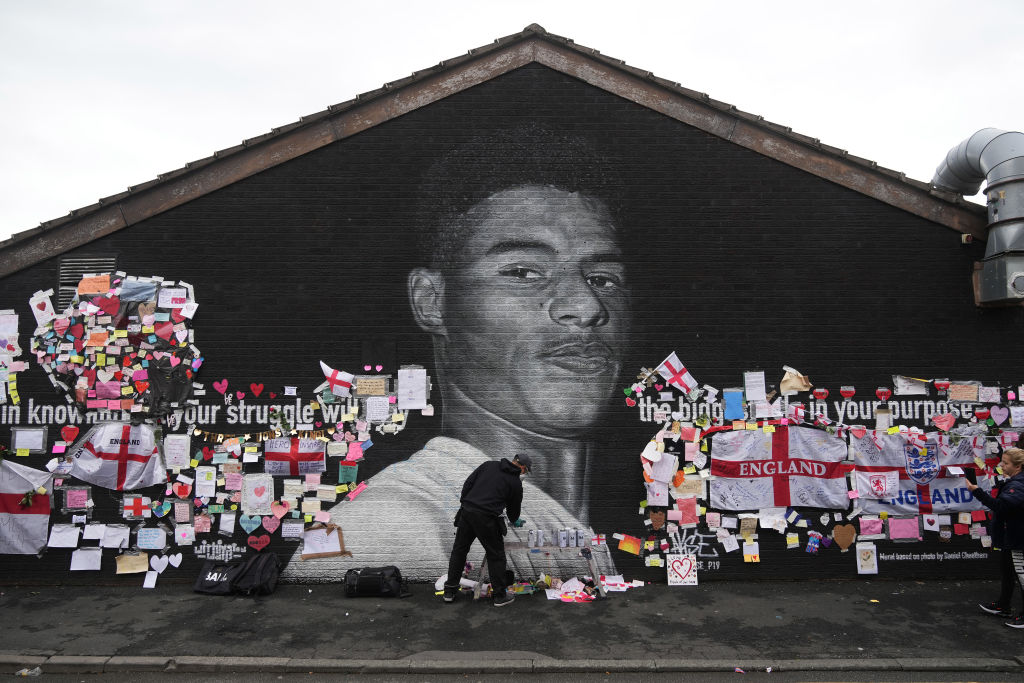Late on Sunday night, less than an hour after England lost on penalties to Italy in the European championship final, a mural of the United striker Marcus Rashford was defaced in his hometown of Withington in south Manchester.
Shortly afterwards the defaced part of the mural was hidden by black bin-liners and an online campaign was launched by the artist to repair the mural. Mr S believes the first report from the Manchester Evening News described the vandalism as ‘indecipherable lettering, daubed in blue paint on Sunday night, [which] can barely be seen over the powerful black and white image.’
On Monday morning, Greater Manchester Police released a statement which said they had responded to ‘reports’ of racially aggravated damage to the mural. A livid Chief Superintendent Paul Savill added that:
‘This is disgraceful behaviour and will absolutely not be tolerated. Greater Manchester prides itself on being made up from a number of diverse communities and hate crime in any form is completely unacceptable and not welcome here in our city.’
The response was overwhelming. An online fundraiser to restore the image raised over £30,000 and local residents flocked to the mural to cover the painting with messages of love and support for Rashford. On Tuesday, a protest took place in front of the mural, with hundreds of people taking the knee.
Arguably, the media coverage which followed was even more intense. Alongside reports that England players had received racial abuse on social media – much of which was later found to have come from abroad – the narrative took hold, buoyed by the hysteria of journalists on Twitter, that the ugly underside of English racism had been exposed in the aftermath of the game. The mural dominated the news agenda for much of the week.
The day afterwards, the image was plastered across the front pages, with the Mirror, pointing out that the messages of support were defending Rashford from ‘vile, racist abuse’.
The broadcasters took notice too. The BBC said that the mural had been defaced by ‘racist graffiti’, while an ITV report argued that ‘a mural to England footballer Marcus Rashford has gone from being vandalised with racist messages to becoming a symbol of hope and support in the space of 24 hours.’
An Independent headline reported that ‘Hundreds descend on defaced Marcus Rashford mural to decry racist graffiti’ and the Guardian spun out a whole editorial on the subject, which argued that the ‘racially aggravated damage’ highlighted the existence of a ‘nasty, vindictive minority among the England national team’s support.’
Even the Manchester Evening News, which had originally reported that the graffiti was almost indecipherable, added to the clamour, saying that the mural had been ‘defaced by racists’ and sprayed by ‘racially aggravated’ graffiti.
They were joined by the Greater Manchester mayor Andy Burnham, who said that the defacement was a ‘despicable, shameful act’ and argued:
‘For those who’ve been asking why our players take the knee, I think they’ve got a very clear answer when they see appalling, appalling racism of this kind.’
It was of no surprise then that reports of the mural defacement made their way across the Atlantic. This week the US paper of record, the New York Times, reported that ‘A mural of the English star Marcus Rashford, marred by racist slurs after England lost the European soccer championship to Italy, was soon covered in messages of support from fans.’

What appeared to unite these reports of racial slurs and abuse against Rashford was a remarkable lack of curiosity from media outlets as to what the graffiti originally said.
Therefore Mr S was surprised to see last night a statement from Greater Manchester Police which revealed that the force, while keeping an open mind as to the motive of the defacement, did not believe it ‘to be of a racial nature’.
It may be the case, of course, that the attacker was motivated by racial prejudice, or was attempting to write a racial slur. And it goes without saying that any abuse of the young player after his penalty was crass, nasty and wrong. But as of writing there appears to be no evidence that in this case the attack was racially motivated.
In other words, media outlets, including the national broadcaster, have spent an entire week reporting on a racist element of the graffiti that may not even exist. It is perhaps understandable that media outlets reported on GMP’s mistaken first assessment of the graffiti as racially motivated. But it says something rather concerning about the state of the press that after a week of reporting no one bothered to stand up the story…







Comments